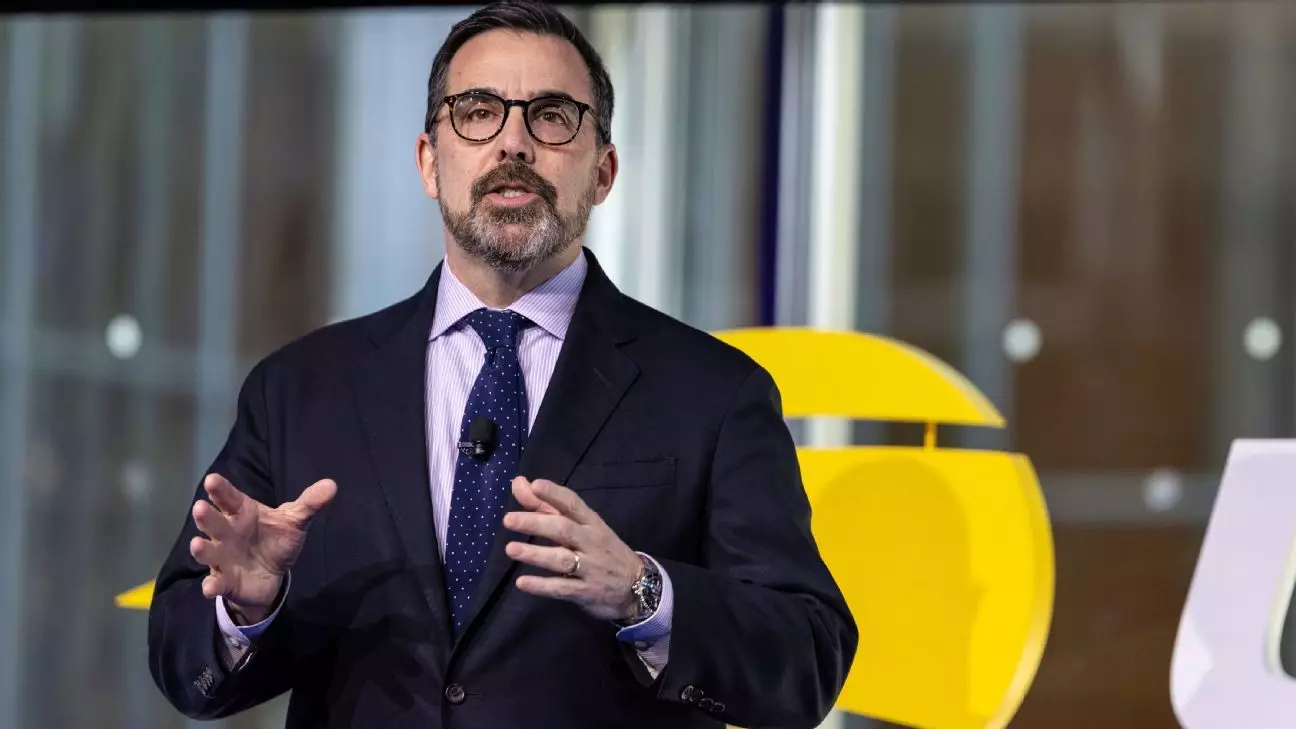In a strategic move that signifies a turning point for the New York Mets, the organization has chosen Lew Sherr as its new president of business operations. Sherr’s appointment follows an impressive tenure with the U.S. Tennis Association (USTA), where he not only pushed the sport of tennis into new heights but also proved adept at navigating the intricate world of sports management and marketing. This transition is vital for the Mets, who are seeking revitalization after a period marked by inconsistency on and off the field.
Sherr’s arrival is met with high expectations, largely due to his successful track record in his previous role. As CEO of the USTA since 2022 and with over a decade of service to the association, Sherr has managed to bolster participation rates in tennis across the country and oversee a dynamic growth of attendance figures at the US Open. His knack for generating revenue through strategic partnerships and engaging ticket sales has been a game-changer. The optimism around Sherr’s leadership is palpable as he prepares to transition from a sport with a significant elite following to one that has immense potential for community engagement and broader fan appeal.
The Genesis of Change
The Mets’ management has been on a somewhat tumultuous journey recently, highlighted by the departure of several key executives, including Scott Havens, their former president of business operations. Such changes often signal an organization’s willingness to adapt and grow; however, they can also introduce uncertainty. In light of these shake-ups, the Mets’ ownership under Steve Cohen has demonstrated commitment to augmenting team operations by appointing audacious leaders like Sherr, who possess a wealth of knowledge and experience.
Cohen’s ambitious plans, including the development of a casino and entertainment hub adjacent to Citi Field, appear to mirror Sherr’s undertaking at the USTA, where he introduced transformative initiatives that not only improved existing assets but also expanded them. These ventures align with the broader vision of creating multifaceted experiences for fans, enhancing community involvement, and elevating the Mets’ brand beyond the traditional baseball framework. Sherr recognizes this potential, seeing a vibrant future with the Mets distinct from his accomplishments in tennis.
Meeting Fan Expectations
One of the most intriguing aspects of Sherr’s transition will be how his experiences in high-stakes environments can reshape the Mets’ operational strategies. The expectations of baseball fans can be stringent, especially in a market like New York, where loyalty runs deep but can easily wane with performances that fall short. Sherr’s leadership will be crucial in bridging the gap between on-field performance and fan engagement. His comments regarding community initiatives that the Mets have planned reflect an understanding of the integral relationship between sports teams and their local communities—a relationship that can be pivotal for long-term success.
Sherr’s familiarity with both elite tournaments and recreational tennis highlights a dual approach that can be beneficial: catering to dedicated baseball aficionados while also reaching out to a broader audience. The coming season will not only be an evaluation of the Mets’ performance but also how effectively they can foster a vibrant community spirit, akin to what Sherr accomplished with the US Open.
A Vision for the Future
Lew Sherr’s understanding of major sports operations indicates that he is primed to take bold strides to redefine the Mets’ identity. His shift from tennis to baseball is not just a career move; it represents an evolution that mirrors his intrinsic belief in growth and adaptability. Throughout his interview at the French Open, he displayed excitement about the transition, hinting at a philosophy that embraces innovation while respecting tradition.
Key infrastructural upgrades, much like those he championed at the USTA, will likely be at the forefront of Sherr’s agenda with the Mets. These improvements can create a dynamic atmosphere that invites fans to experience baseball not just as spectators, but as part of a larger narrative that connects them with the franchise’s aspirations. This vision can only enhance the franchise’s appeal and potentially spur performance on the field.
With Sherr at the helm, the Mets could be on the brink of a new era—one characterized by systematic growth, deeper community ties, and a proactive approach to meeting modern sports fans’ evolving expectations. As he embarks on this significant transformation, the baseball world will be keeping a watchful eye on the unfolding chapters of this ambitious undertaking.

